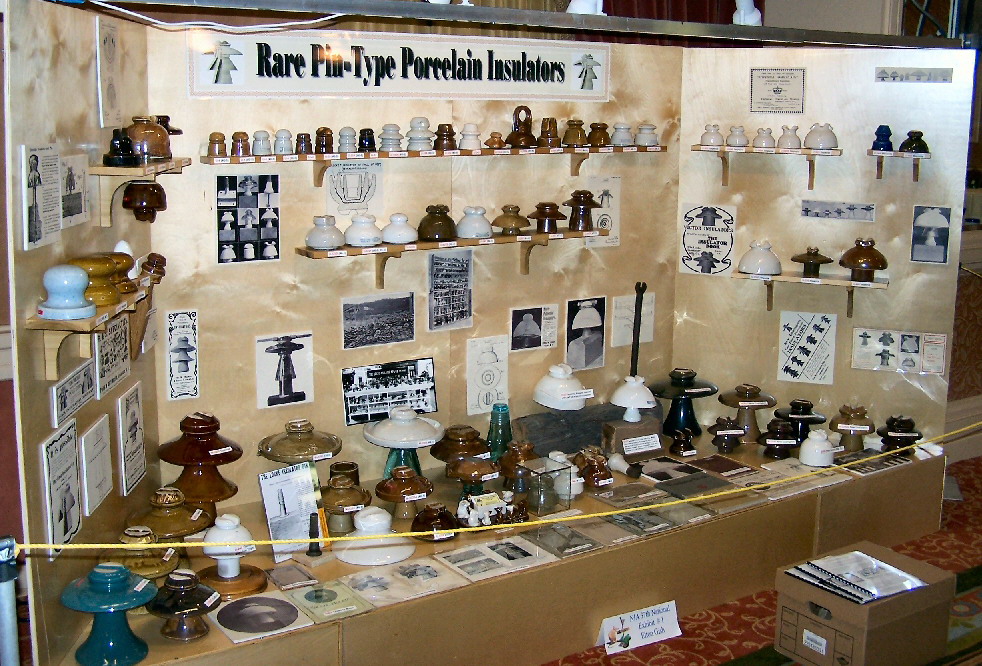
Rare Pin-Type Porcelain Insulators
Handout for the Display at the 2006 Austin, TX
NIA National Show
by Elton Gish

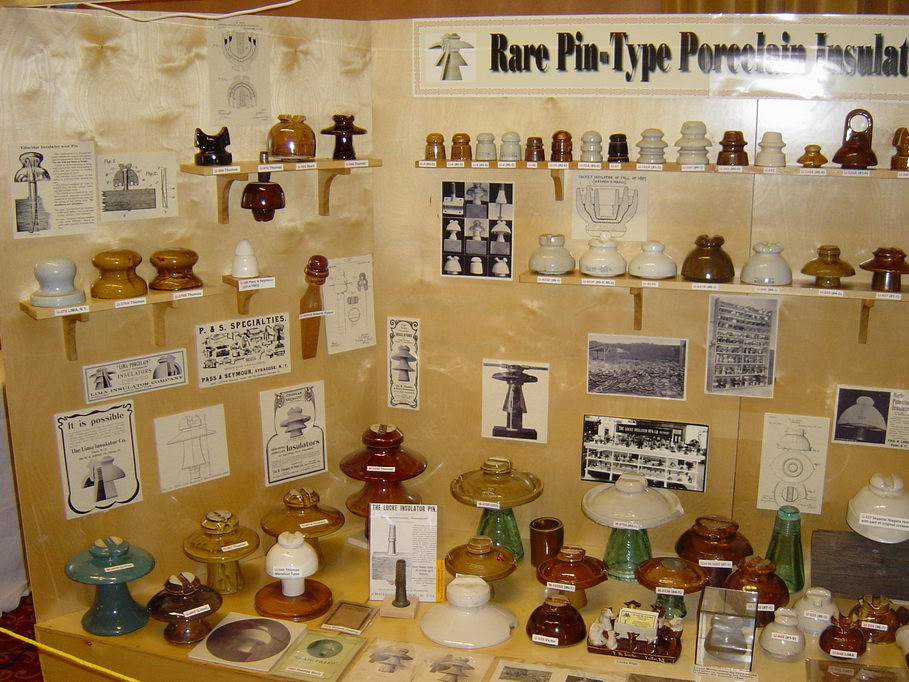
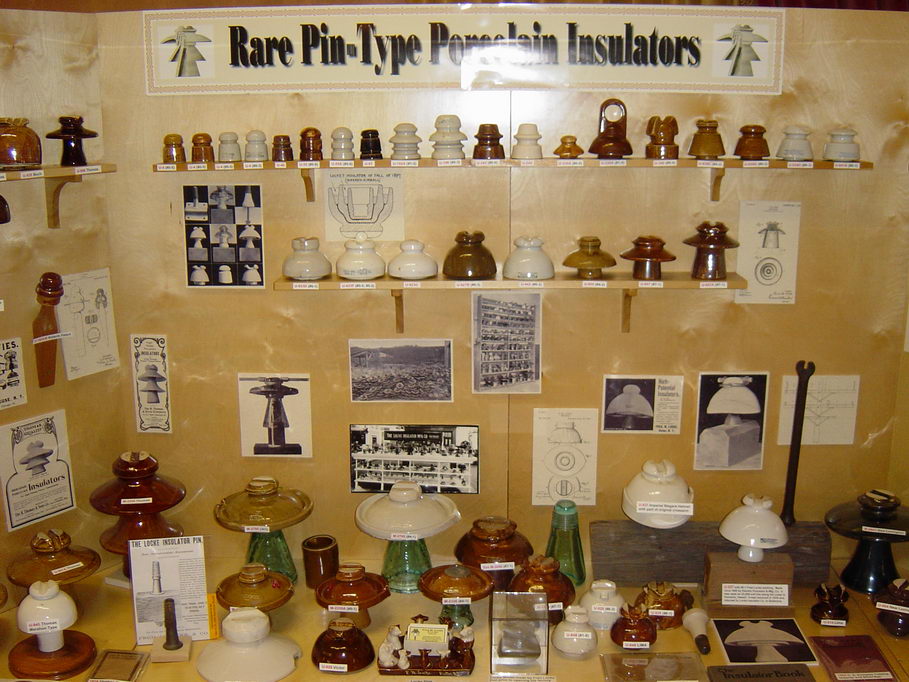
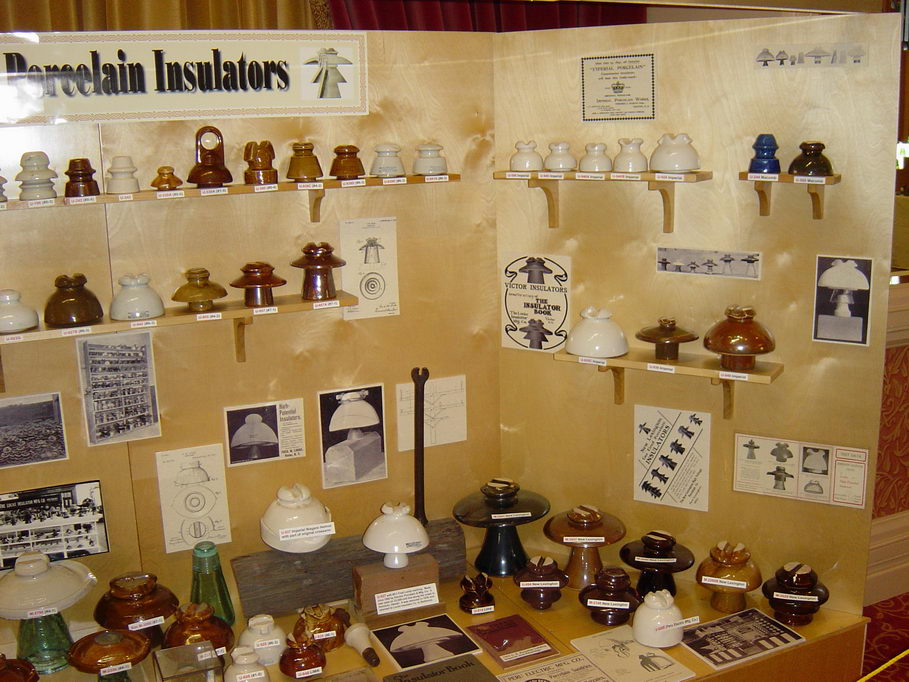
Rare Porcelain Display: Page 2 Page 3 Page 4 Page 5 Page 6 Page 7
The first insulators used in the U.S. were made of glass. The pinhole was smooth and threadless. A piece of burlap over the end of a threadless wooden pin helped to wedge the threadless insulator on the pin.
Louis A. Cauvet's patent granted on July 25, 1865 brought a more secured method to mount glass insulators on wooden pins. The patent claimed threads formed in the molten glass so the insulator could be screwed down on a wooden pin with matching threads cut on the pin.
Pass & Seymour (first wet process pin-type)
In 1890, the company Pass & Seymour, Inc. was formed to produce better insulators for electric power transmission. They focused on making wet process porcelain insulators using the casting process. This was a high quality wet process porcelain made by pouring a thick, liquid clay into a plaster mold, which absorbed much of the water to produced a soft plastic clay body. Their first insulator was probably U-141 that had a porcelain insert with threads formed in it. In February 1891, they announced they had succeeded in threading plastic clay, the first company to so. Their first insulator using this discovery was U-146. There is one specimen in the Smithsonian, but only one known in the hobby.
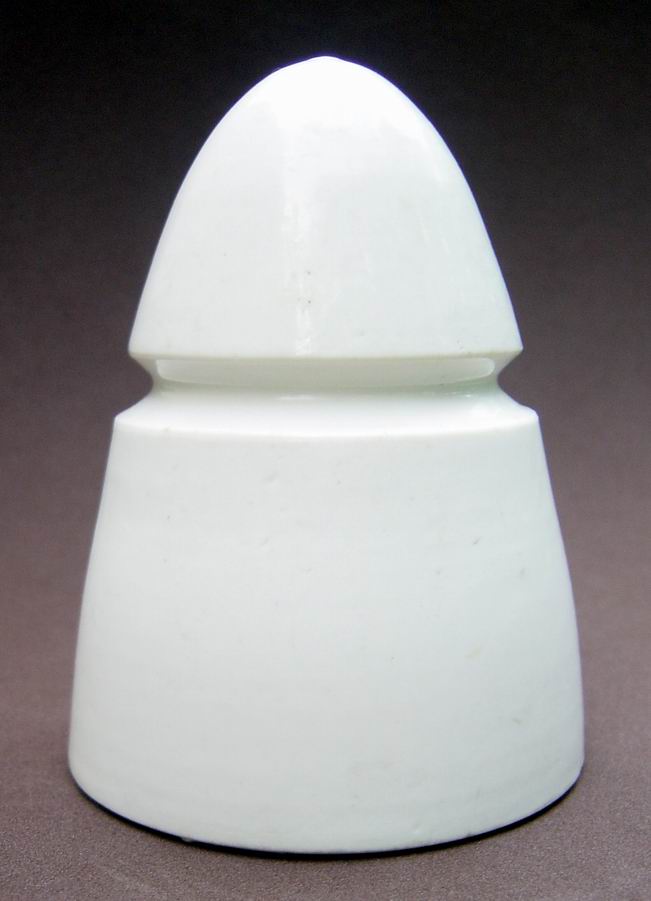
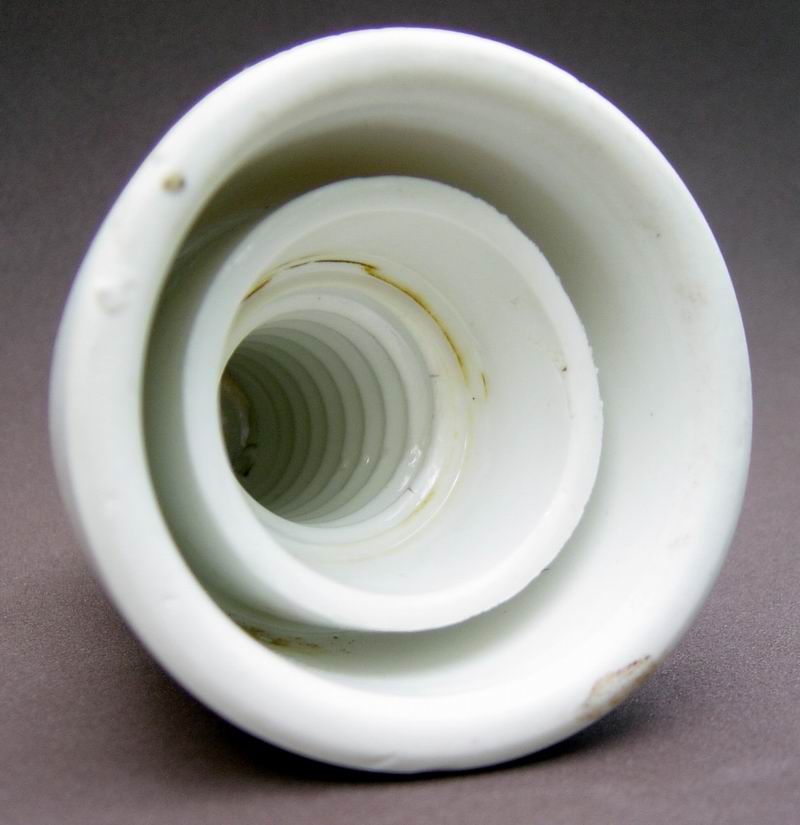
Pass & Seymour U-146
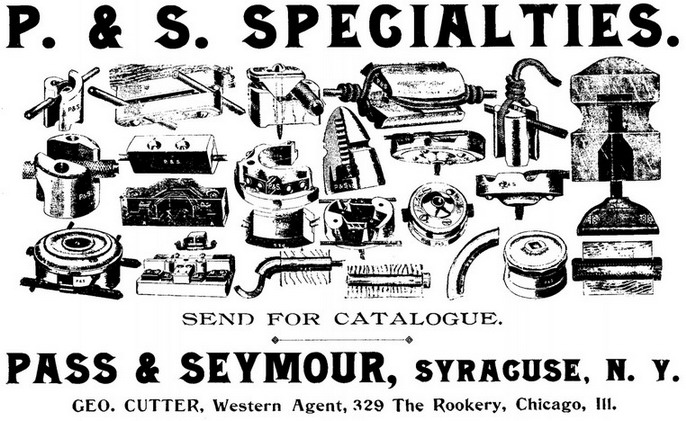
Advertisement from March 4, 1893 Electrical World.
The P & S wet process insulators were expensive and failed to compete with glass insulators. The R. Thomas & Sons Co. began experimenting with making inexpensive dry pressed porcelain insulators in 1891. Their 1892 catalog offered three styles of "outdoor" insulators, which were probably small insulators for telegraph and telephone lines. Cutting or forming threads in the dry pressed insulators was fairly simple. However, Thomas had limited success competing with glass insulators, which had become standard for telegraph and telephone lines and were being used, too, on early low voltage electric power lines. General Electric Co. also produced three styles of dry pressed insulators for power lines.
Fred Locke, Imperial Porcelain Works, Electric Porcelain Mfg. Co.
Fred Locke was having glass insulators made to his designs by first Hemingray Glass Co. and later by the Brookfield Glass Co. Glass was fragile an easily broken. Fred Locke considered porcelain to be a stronger insulator and less prone to breakage and electrical surface leakage. In early 1895, he designed a triple petticoat porcelain insulator and contracted with Thomas to produce them for electric power transmission lines. However, these dry pressed insulators were of poor quality often showing cracks in the porcelain body under the clear glaze making them porous and the insulators were nearly as brittle as glass.
The Niagara Falls-Buffalo 11,000 volt transmission line was completed in late 1896. The construction company asked several companies to submit insulators for testing in early 1896. General Electric, Thomas, Electric Porcelain Mfg. Co., and Peru Electric Mfg. Co. submitted insulators made of dry pressed porcelain. All of the insulators from these companies were unsatisfactory in the test because of the porous nature of dry pressed porcelain.
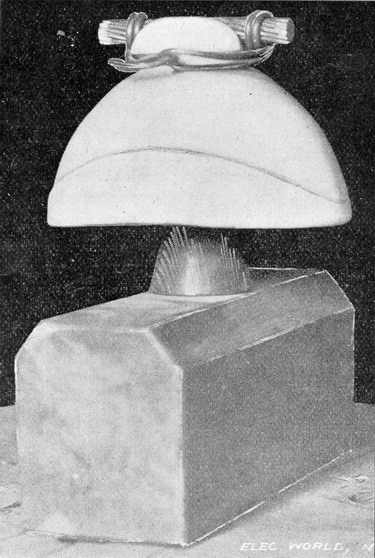 Fred Locke designed a large oval-shaped porcelain insulator,
U-937 (shown at left), which had drain eaves on each side to direct rainwater away from the crossarm and triple petticoats. He knew wet process porcelain was non-porous insulator and would make a better. In early 1896, he started having his insulator designs made of wet process porcelain by the Imperial Porcelain Co. He asked them to make the large U-937 and submitted the insulator for testing to be used the Niagara Fall-Buffalo line. The insulator was the only one that passed the electrical test. Very few U-937's exist today.
Fred Locke designed a large oval-shaped porcelain insulator,
U-937 (shown at left), which had drain eaves on each side to direct rainwater away from the crossarm and triple petticoats. He knew wet process porcelain was non-porous insulator and would make a better. In early 1896, he started having his insulator designs made of wet process porcelain by the Imperial Porcelain Co. He asked them to make the large U-937 and submitted the insulator for testing to be used the Niagara Fall-Buffalo line. The insulator was the only one that passed the electrical test. Very few U-937's exist today.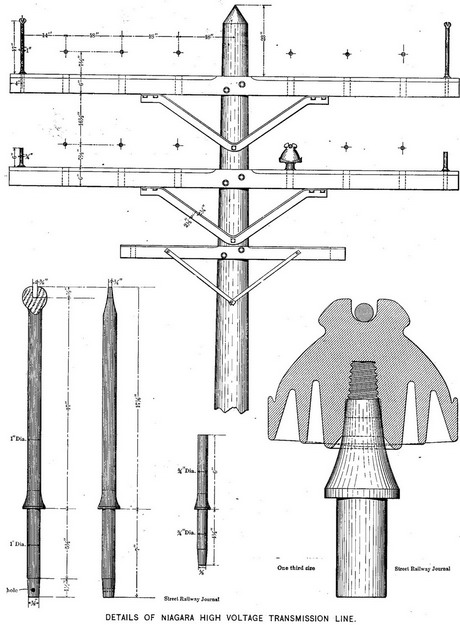 Note the top edges of the crossarm were trimmed off.
Note the top edges of the crossarm were trimmed off.
From January 22, 1898 Electrical World.
The Niagara - Buffalo line was only 11,000 volts. The original line had all three phases on the same crossarm. It was soon changed to a triangle pattern on the same side of the pole with one insulator on the top crossarm and two on the lower crossarm. A cast iron rod with a notch on the top was mounted on each end of the end of the crossarm to support a wire to act as lightning protection. In the late 1960's, Bill Kuhar and his father walked the Niagara-Buffalo line looking for U-937 and other insulators. They found one crossarm complete with a cast iron rod on each end. I got one end of that crossarm from Bill, which can be seen in the display with an original U-937 helmet.
Illustration above is from the August 1896 Street Railway Journal which shows details of the pole layout and the cast iron supports for the wire to protect the line from lightning (Courtesy of the Smithsonian Institute NMAH).
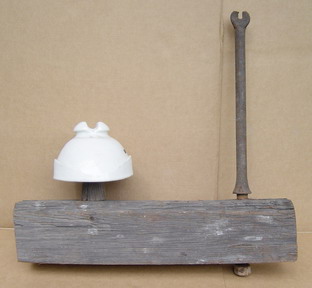
One half of the surviving crossarm complete with specimen of U-937. The insulator has the incuse marking "Manufactured by Imperial Porcelain Works, Trenton, N.J."
Rare Porcelain Display: Page 2 Page 3 Page 4 Page 5 Page 6 Page 7